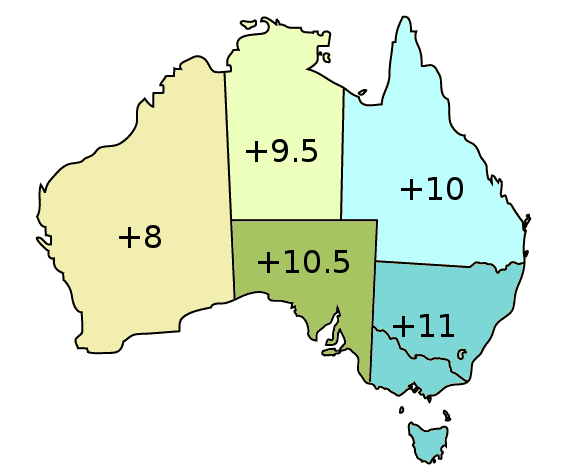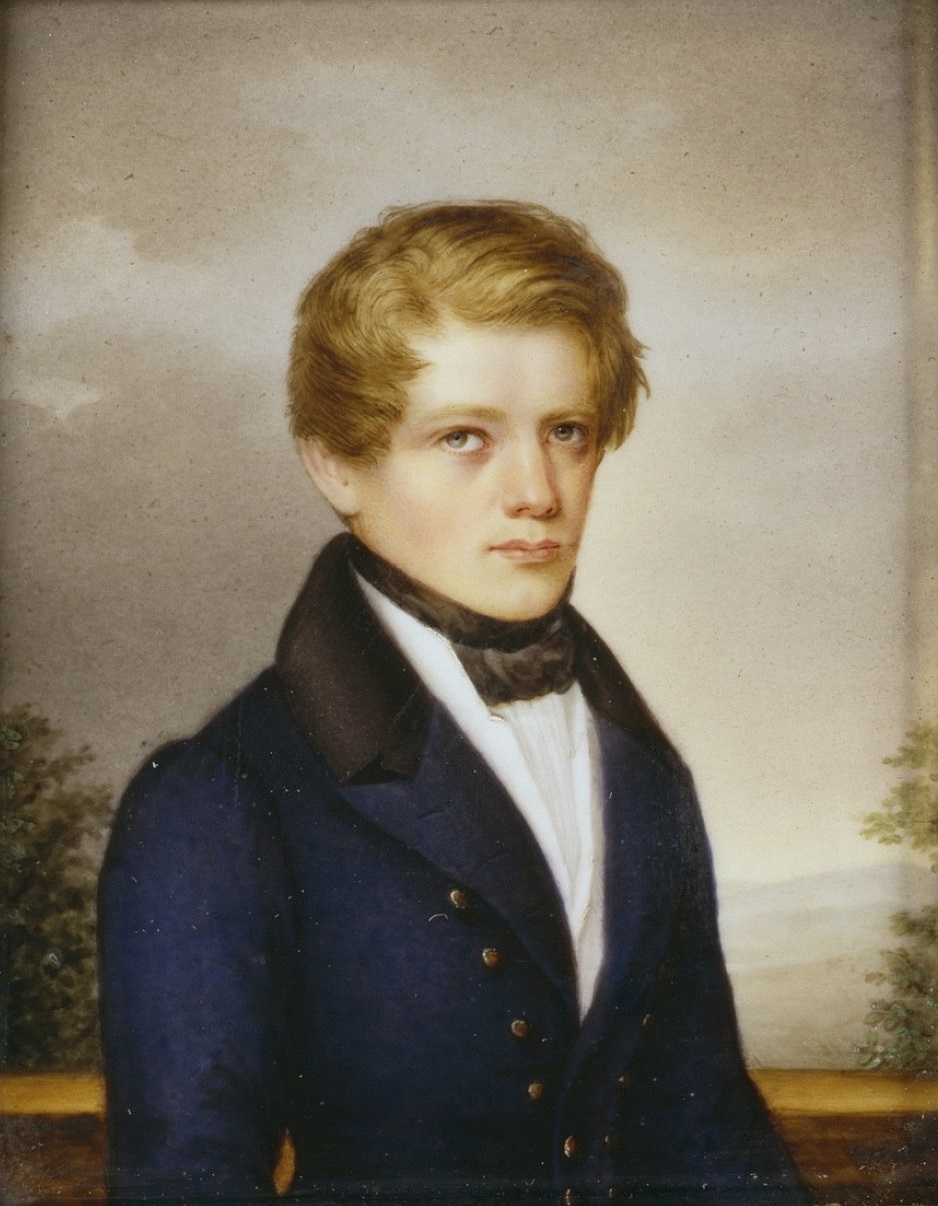|
North Maclagan, Queensland
North Maclagan is a rural locality in the Toowoomba Region, Queensland, Australia. In the North Maclagan had a population of 5 people. History The locality is named for being north of the town of Maclagan. The town was originally named Bismarck after Otto von Bismarck Otto, Prince of Bismarck, Count of Bismarck-Schönhausen, Duke of Lauenburg (, ; 1 April 1815 – 30 July 1898), born Otto Eduard Leopold von Bismarck, was a conservative German statesman and diplomat. From his origins in the upper class of J .... Due to the anti-German sentiment during World War I, the town was renamed Maclagan in honour of Brigadier Ewen George Sinclair-Maclagan in 1916. Maclagan North State School opened on 12 September 1922. It closed on 4 May 1962. In the North Maclagan had a population of 5 people. References Toowoomba Region Localities in Queensland {{Toowoomba-geo-stub ... [...More Info...] [...Related Items...] OR: [Wikipedia] [Google] [Baidu] |
AEST
Australia uses three main time zones: Australian Western Standard Time (AWST; UTC+08:00), Australian Central Standard Time (ACST; UTC+09:30), and Australian Eastern Standard Time (AEST; UTC+10:00). Time is regulated by the individual state governments, some of which observe daylight saving time (DST). Australia's external territories observe different time zones. Standard time was introduced in the 1890s when all of the Australian colonies adopted it. Before the switch to standard time zones, each local city or town was free to determine its local time, called local mean time. Now, Western Australia uses Western Standard Time; South Australia and the Northern Territory use Central Standard Time; while New South Wales, Queensland, Tasmania, Victoria, Jervis Bay Territory, and the Australian Capital Territory use Eastern Standard Time. Daylight saving time (+1 hour) is used in jurisdictions in the south and south-east: South Australia, New South Wales, Victoria, Tasm ... [...More Info...] [...Related Items...] OR: [Wikipedia] [Google] [Baidu] |
Electoral District Of Nanango
Nanango is an electoral division in the state of Queensland, Australia. Notable towns include Nanango, Kingaroy and Crows Nest. It has existed twice. It was first created in 1912, and was replaced by Barambah in 1950. It was recreated in 2001, as a replacement for Barambah. Nanango was the original seat of Sir Joh Bjelke-Petersen (from 1947 to 1950). The seat has never been won by the Labor Party in either of its incarnations; indeed, counting its history as Barambah (which covered essentially the same area), it has been in the hands of a conservative party or a conservative independent for over a century. Members for Nanango Election results References External links * {{Electoral districts of Queensland Nanango Nanango is a rural town and locality in the South Burnett Region, Queensland, Australia. In the , the locality of Nanango had a population of 3,599 people. Geography Nanango is situated north-west of the state capital, Brisbane, at the j ... [...More Info...] [...Related Items...] OR: [Wikipedia] [Google] [Baidu] |
Division Of Groom
The Division of Groom is an Australian Electoral Division in Queensland. Groom is an agricultural electorate located on the Darling Downs in southern Queensland. It includes the regional city of Toowoomba and rural communities to the west and south. The current MP is Garth Hamilton, a member of the Liberal National Party of Queensland. Geography Since 1984, federal electoral division boundaries in Australia have been determined at redistributions by a redistribution committee appointed by the Australian Electoral Commission. Redistributions occur for the boundaries of divisions in a particular state, and they occur every seven years, or sooner if a state's representation entitlement changes or when divisions of a state are malapportioned. History The division was created in 1984 as essentially a reconfigured version of the old Division of Darling Downs, which had existed since Federation. It is named in honour of Sir Littleton Groom, who represented Darling Downs with on ... [...More Info...] [...Related Items...] OR: [Wikipedia] [Google] [Baidu] |
Rangemore, Queensland (Toowoomba Region)
Rangemore is a rural locality in the Toowoomba Region, Queensland, Australia. In the , Rangemore had a population of 3 people. Geography Rangemore is an area between North Maclagan and Rangemore to the northwest and between Marriages Road and Cooyar Rangemore Road. The principal land use is farming. History Rangemore State School opened on 17 March 1913. In 1917 it was downgraded to a half-time provisional school in conjunction with King's Tent Provisional School (meaning the two schools shared a single teacher). In 1918 King's Tent Provisional School closed and Rangemore once again became a full-time state school. It was finally closed circa 1962. In the Rangemore had a population of 3 people. References {{Toowoomba Region Toowoomba Region Localities in Queensland ... [...More Info...] [...Related Items...] OR: [Wikipedia] [Google] [Baidu] |
Maclagan, Queensland
Maclagan is a rural town and locality in the Toowoomba Region, Queensland, Australia. In the the locality of Maclagan had a population of 195 people. Geography Maclagan is a small town on the Darling Downs, 80 km (49.7 mi) north-west of Toowoomba and 45 km (28 mi) east of Dalby. The Dalby–Cooyar Road runs through from south to east. Bunya Mountains-Maclagan Road exits to the north. The Pechey-Maclagan Road ends at the southern boundary where it meets Dalby-Cooyar Road. History The township of Maclagan was surveyed on 17 May 1889. The town was originally named Bismarck after Otto von Bismarck until 1916 when it was renamed Maclagan due to the anti-German sentiment during World War I. The township was renamed Maclagan in honour of Brigadier Ewen George Sinclair-Maclagan (1868-1948). Bismarck Street is still a street in the town. Moola Road Provisional School opened on 5 September 1904. On 1 January 1909, it became Moola Road State School. In 191 ... [...More Info...] [...Related Items...] OR: [Wikipedia] [Google] [Baidu] |
Suburbs And Localities (Australia)
Suburbs and localities are the names of geographic subdivisions in Australia, used mainly for address purposes. The term locality is used in rural areas, while the term suburb A suburb (more broadly suburban area) is an area within a metropolitan area, which may include commercial and mixed-use, that is primarily a residential area. A suburb can exist either as part of a larger city/urban area or as a separate ... is used in urban areas. Australian postcodes closely align with the boundaries of localities and suburbs. This Australian usage of the term "suburb" differs from common American and British usage, where it typically means a smaller, frequently separate residential community outside, but close to, a larger city. The Australian usage is closer to the American or British use of "district" or "neighbourhood", and can be used to refer to any portion of a city. Unlike the use in British or American English, this term can include inner-city, outer-metropolitan ... [...More Info...] [...Related Items...] OR: [Wikipedia] [Google] [Baidu] |
Toowoomba Region
The Toowoomba Region is a local government area located in the Darling Downs part of Queensland, Australia. Established in 2008, it was preceded by several previous local government areas with histories extending back to the early 1900s and beyond. In 2018-2019, it had a A$491 million budget, of which A$316 million is for service delivery and A$175.13 million capital (infrastructure) budget. History Prior to the 2008 amalgamation, the Toowoomba Region existed as eight distinct local government areas: the City of Toowoomba and the Shires of Cambooya, Clifton, Crows Nest, Jondaryan, Millmerran, Pittsworth, and Rosalie. The City had its beginning in the Toowoomba Municipality which was proclaimed on 24 November 1860 under the ''Municipalities Act 1858'', a piece of New South Wales legislation inherited by Queensland when it became a separate colony in 1859. William Henry Groom, sometimes described as the "father of Toowoomba", was elected its first mayor. It achieved a me ... [...More Info...] [...Related Items...] OR: [Wikipedia] [Google] [Baidu] |
Queensland
) , nickname = Sunshine State , image_map = Queensland in Australia.svg , map_caption = Location of Queensland in Australia , subdivision_type = Country , subdivision_name = Australia , established_title = Before federation , established_date = Colony of Queensland , established_title2 = Separation from New South Wales , established_date2 = 6 June 1859 , established_title3 = Federation of Australia, Federation , established_date3 = 1 January 1901 , named_for = Queen Victoria , demonym = , capital = Brisbane , largest_city = capital , coordinates = , admin_center_type = Administration , admin_center = Local government areas of Queensland, 77 local government areas , leader_title1 = Monarchy of Australia, Monarch , leader_name1 = Charles III , leader_title2 = Governor of Queensland, Governor , leader_name2 = Jeannette Young , leader_title3 = Premier of Queensland, Premier , leader_name3 = Annastacia Palaszczuk (Australian Labor Party (Queensland Branch), AL ... [...More Info...] [...Related Items...] OR: [Wikipedia] [Google] [Baidu] |
Otto Von Bismarck
Otto, Prince of Bismarck, Count of Bismarck-Schönhausen, Duke of Lauenburg (, ; 1 April 1815 – 30 July 1898), born Otto Eduard Leopold von Bismarck, was a conservative German statesman and diplomat. From his origins in the upper class of Junker landowners, Bismarck rose rapidly in Prussian politics, and from 1862 to 1890 he was the minister president and foreign minister of Prussia. Before his rise to the executive, he was the Prussian ambassador to Russia and France and served in both houses of the Prussian Parliament. He masterminded the unification of Germany in 1871 and served as the first Chancellor of the German Empire until 1890, in which capacity he dominated European affairs. He had served as the chancellor of the North German Confederation from 1867 to 1871, alongside his responsibilities in the Kingdom of Prussia. He cooperated with King Wilhelm I of Prussia to unify the various German states, a partnership that would last for the rest of Wilhelm's life. The ... [...More Info...] [...Related Items...] OR: [Wikipedia] [Google] [Baidu] |
Anti-German Sentiment
Anti-German sentiment (also known as Anti-Germanism, Germanophobia or Teutophobia) is opposition to or fear of Germany, its inhabitants, its culture, or its language. Its opposite is Germanophilia. Anti-German sentiment largely began with the mid-19th-century unification of Germany, which made the new nation a rival to the great powers of Europe on economic, cultural, geopolitical, and military grounds. However, the German atrocities during World War I and World War II greatly strengthened anti-German sentiment. Before 1914 United States In the 19th century, the mass influx of German immigrants made them the largest group of Americans by ancestry today. This migration resulted in nativist reactionary movements not unlike those of the contemporary Western world. These would eventually culminate in 1844 with the establishment of the American Party, which had an openly xenophobic stance. One of many incidents described in a 19th century account included the blocking ... [...More Info...] [...Related Items...] OR: [Wikipedia] [Google] [Baidu] |
World War I
World War I (28 July 1914 11 November 1918), often abbreviated as WWI, was List of wars and anthropogenic disasters by death toll, one of the deadliest global conflicts in history. Belligerents included much of Europe, the Russian Empire, the United States, and the Ottoman Empire, with fighting occurring throughout Europe, the Middle East, Africa, the Pacific Ocean, Pacific, and parts of Asia. An estimated 9 million soldiers were killed in combat, plus another 23 million wounded, while 5 million civilians died as a result of military action, hunger, and disease. Millions more died in Genocides in history (World War I through World War II), genocides within the Ottoman Empire and in the Spanish flu, 1918 influenza pandemic, which was exacerbated by the movement of combatants during the war. Prior to 1914, the European great powers were divided between the Triple Entente (comprising French Third Republic, France, Russia, and British Empire, Britain) and the Triple A ... [...More Info...] [...Related Items...] OR: [Wikipedia] [Google] [Baidu] |






.jpg)